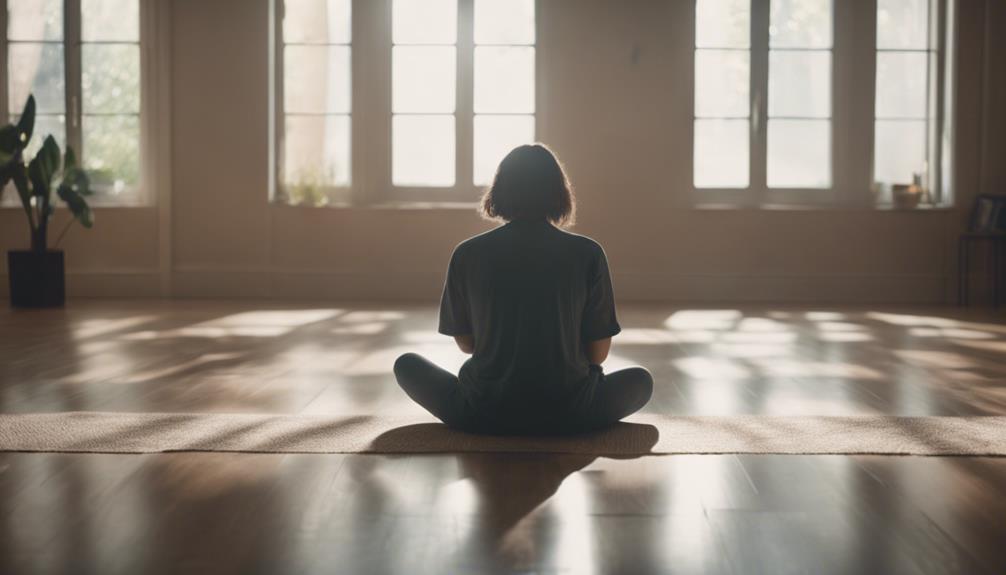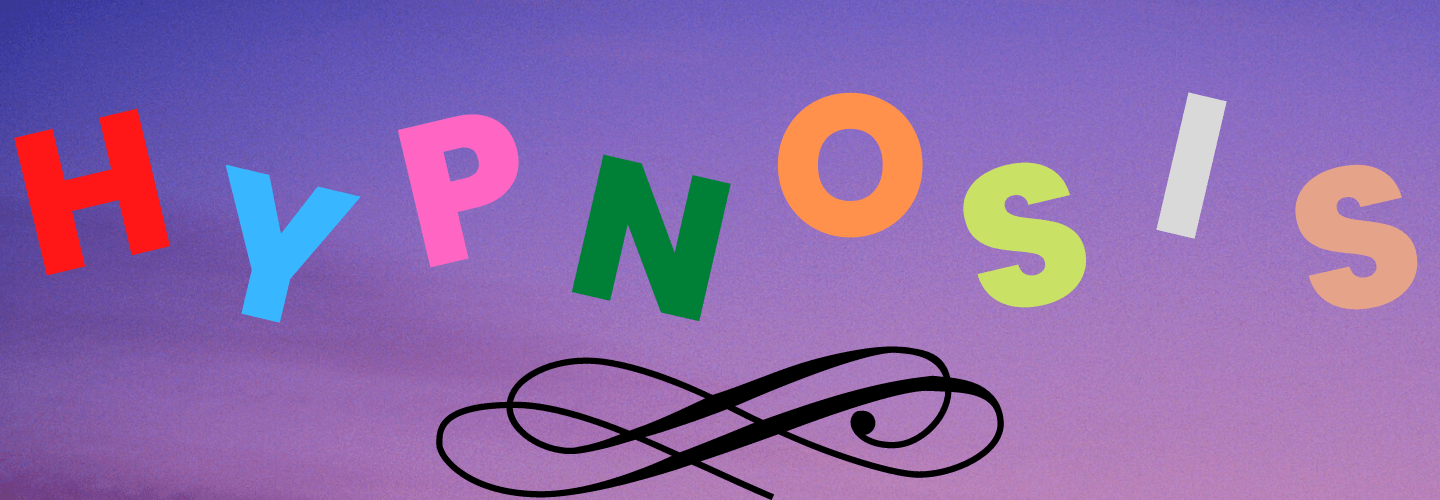
Discover the potential of self-hypnosis in mastering anxiety, offering proven relief and empowerment. Through techniques like relaxation, positive affirmations, and visualization, you can access your subconscious mind to develop effective coping mechanisms. By engaging in regular practice, you can achieve long-term management of anxiety without side effects. Embrace deep relaxation, affirmations, and visualizations in a quiet space for enhanced effectiveness. Craft hypnotic suggestions with positive language, specificity, and vivid imagery tailored to your needs. Embrace self-hypnosis as a tool for lasting anxiety reduction and emotional well-being, revealing a path to resilience and healthier coping strategies.
Key Takeaways
- Deep relaxation in a quiet space initiates self-hypnosis.
- Positive affirmations promote calmness and confidence.
- Visualizing peaceful scenarios enhances effectiveness.
- Tailored suggestions empower and optimize anxiety relief.
- Consistent practice ensures lasting reduction in anxiety levels.
Understanding Self-Hypnosis for Anxiety
In delving into the domain of self-hypnosis for anxiety, it is essential to grasp the profound impact of this therapeutic practice on alleviating and managing anxiety symptoms. Self-hypnosis involves a state of deep attention where individuals can achieve relief from anxiety by accessing their subconscious mind. Through techniques such as relaxation, positive affirmations, and visualization, self-hypnosis offers a powerful tool for individuals to address their anxiety symptoms effectively.
When individuals practice self-hypnosis regularly, they not only experience immediate relief from anxiety but also develop coping mechanisms for long-term anxiety management. By tapping into the subconscious mind, self-hypnosis can reframe negative thought patterns into more positive and empowering beliefs, leading to a reduction in anxiety levels over time.
Professionals often recommend self-hypnosis as a complementary therapy for anxiety management due to its effectiveness in promoting relaxation and mental well-being. By incorporating self-hypnosis techniques into their daily routine, individuals can cultivate a sense of inner calm and resilience in the face of anxiety triggers. Ultimately, self-hypnosis serves as a valuable tool for individuals seeking to take control of their anxiety and lead a more balanced and fulfilling life.
Difference Between Hypnosis and Hypnotherapy
As individuals explore the realm of self-hypnosis for anxiety relief, it becomes essential to distinguish between the concepts of hypnosis and hypnotherapy, shedding light on their unique roles in addressing psychological well-being. Hypnosis is a state of focused attention and openness to suggestions, while hypnotherapy, on the other hand, utilizes hypnosis as a tool to address specific issues such as anxiety, smoking cessation, and confidence.
Hypnotherapy, whether conducted with a therapist or through self-hypnosis techniques, aims at inducing behavioral and psychological improvements by tapping into the subconscious mind. Through the state of hypnosis, individuals can access their subconscious mind to facilitate behavioral changes and promote emotional healing. This process has been rigorously tested in clinical trials over the years, showcasing its effectiveness in treating various psychological and behavioral conditions.
The primary goal of hypnotherapy is to bring about positive changes in thoughts, behaviors, and emotions by harnessing the power of the subconscious mind. By leveraging the capabilities of the subconscious, individuals can work towards enhancing their well-being and achieving a state of mental and emotional balance. Understanding the difference between hypnosis and hypnotherapy is vital for individuals seeking to undertake a journey of self-improvement and psychological healing.
Performing Self-Hypnosis Steps for Anxiety

Begin your journey towards anxiety relief by mastering the art of performing self-hypnosis steps with precision and dedication. Self-hypnosis is a powerful and accessible technique that can greatly aid in managing anxiety symptoms and promoting emotional well-being.
Here are five essential steps to effectively practice self-hypnosis for anxiety relief:
- Deep Relaxation: Start by finding a quiet and comfortable space where you can sit or lie down. Close your eyes and focus on deep breathing, allowing your body to relax completely.
- Positive Affirmations: Integrate positive statements or affirmations into your self-hypnosis practice. Repeat phrases that promote calmness, confidence, and inner peace to reframe negative thoughts and reduce anxiety.
- Visualization: Visualize a peaceful and serene place or scenario that brings you comfort and tranquility. Engaging in vivid imagery can enhance the effectiveness of self-hypnosis for anxiety relief.
- Cost-Effective Tool: Self-hypnosis is a cost-effective alternative for managing anxiety, offering a natural method without side effects that can be practiced in the comfort of your own home.
- Emotional Well-Being: Regular practice of self-hypnosis can lead to improved emotional well-being and better stress management. Dedicate time to self-hypnosis to experience long-lasting relief from anxiety symptoms.
Tips for Successful Hypnotic Suggestions
Crafting effective hypnotic suggestions is an essential aspect of mastering self-hypnosis techniques for anxiety relief. To guarantee the success of your self-hypnosis practice, it is vital to use positive language that conveys empowerment and optimism. By framing suggestions in a positive light, such as 'I am calm and in control,' you can directly influence the subconscious mind towards a more constructive mindset.
Moreover, specificity and realism are key factors in the effectiveness of hypnotic suggestions. Instead of vague statements, like 'I will feel better,' try incorporating specific details and achievable goals, such as 'I feel a sense of peace washing over me, starting from my toes and reaching up to my head.' This approach helps the mind visualize the desired outcome more vividly, enhancing the impact of the suggestion.
Engaging in vivid imagery during self-hypnosis can further amplify the effectiveness of suggestions. By painting detailed mental pictures of desired outcomes, such as envisioning yourself confidently handling challenging situations, you create a compelling narrative for the subconscious to follow.
Consistent practice of tailored suggestions that cater to your individual needs and goals is essential for long-term anxiety relief. By customizing your self-hypnosis sessions to address specific triggers or areas of concern, you can maximize the benefits of this powerful technique.
Benefits of Regular Self-Hypnosis Practice

Regular self-hypnosis practice offers a pathway to lasting reduction in anxiety levels and enhanced emotional well-being by addressing underlying triggers and fostering self-awareness. Engaging in self-hypnosis techniques consistently can yield a range of benefits that contribute to mental health stability and overall well-being:
- Lasting Reduction in Anxiety Levels: Through regular self-hypnosis practice, individuals can experience a gradual decrease in anxiety levels, leading to a sense of calmness and emotional balance.
- Resilience to Stress: Self-hypnosis helps build resilience over time, enabling individuals to better cope with stressful situations and challenges.
- Improved Coping Mechanisms: By incorporating self-hypnosis into daily routines, individuals can develop healthier coping mechanisms to deal with anxiety triggers effectively.
- Enhanced Emotional Well-being: Self-hypnosis supports emotional well-being by addressing underlying triggers and promoting a positive mindset through self-awareness and reflection.
- Promotion of Positive Self-Talk: Regular self-hypnosis practice encourages the use of positive self-talk, fostering a more optimistic and empowering internal dialogue that contributes to mental health stability in the long term.
Frequently Asked Questions
How Do I Hypnotize Myself for Anxiety?
To hypnotize yourself for anxiety, practice relaxation techniques like:
- Deep breathing
- Positive affirmations
- Visualization exercises
Engage in:
- Progressive muscle relaxation
- Mindfulness meditation
- Guided imagery
- Cognitive reframing
Utilize hypnotic induction methods to enter a self-guided hypnosis state. Create a calming environment and focus on soothing sensations to enhance the effectiveness of your self-hypnosis routine.
Consistent practice can help you gain control over anxiety symptoms and promote overall well-being.
What Is the Success Rate of Hypnosis for Anxiety?
The effectiveness of hypnosis in reducing anxiety symptoms, with a success rate of 74%, showcases its value as a powerful tool for anxiety relief.
Self-hypnosis provides advantages such as emotional regulation, fostering relaxation, and strengthening the connection between the mind and body.
By combining hypnotic relaxation with cognitive therapy, individuals can cultivate strategies for managing stress, healing emotionally, and promoting overall mental well-being.
This highlights the potential of hypnosis in enhancing mental health and overall wellness.
How Long Does It Take for Hypnosis to Work for Anxiety?
Hypnosis effectiveness for anxiety varies among individuals, typically showing benefits within 4-10 sessions. Immediate relief can occur after the first session, with long-lasting reduction through consistent self-hypnosis practice.
Studies indicate significant anxiety reduction in 1-2 weeks of regular sessions. Hypnotherapy offers mental health benefits, coping strategies, and stress relief.
Understanding individual responsiveness and the complexity of anxiety issues helps manage expectations regarding hypnosis effectiveness for anxiety.
How Did I Finally Beat My Anxiety?
Freeing oneself from the shackles of anxiety often involves a multifaceted approach. Utilizing coping strategies, mindfulness practice, breathing techniques, positive affirmations, visualization exercises, and meditation benefits can cultivate inner resilience.
Embracing the relaxation response, stress management, behavioral therapy, and cognitive restructuring can lead one towards overcoming anxiety. By integrating these tools into a personalized tapestry of healing, individuals can commence on a journey towards reclaiming peace and emotional freedom.
Conclusion
To sum up, mastering anxiety through self-hypnosis can provide relief and empowerment in managing stress and negative emotions.
By understanding the principles of self-hypnosis, practicing hypnotic suggestions, and committing to regular sessions, individuals can experience significant benefits in their mental well-being.
Remember, 'practice makes perfect,' and with dedication and persistence, one can tap into the potential within themselves to overcome anxiety and achieve inner peace.





